Here is a magic milk science experiment that your children will want to do again and again! Read on to learn how to do the magic milk science experiment and why it happens.

This particular science activity is lots of fun and a great introduction to those children who haven’t had much experience in observing chemical reactions etc. I had shared this magic milk science experiment a long time ago and it proved particularly popular on my Laughing Kids Learn Facebook page.
Recommended age: 2 years +
(Active supervision is always advised with my activities)
Magic Milk Science Experiment
You will need –
- plate
- 1/2 cup – 1 cup milk
- 1 drop of dishwashing liquid
- food colouring
- toothpicks (optional)
This science experiment is simple to set up and quickly gets to the ‘wow factor’ that will bring a smile to your child’s face.
Simply begin by pouring milk onto a plate. You will need to ensure you have enough milk to cover the base of the plate.
Add a few drops of food colouring to the milk (see above). This will give you a great opportunity to talk about colours and point out if any of them mix together to form new colours.
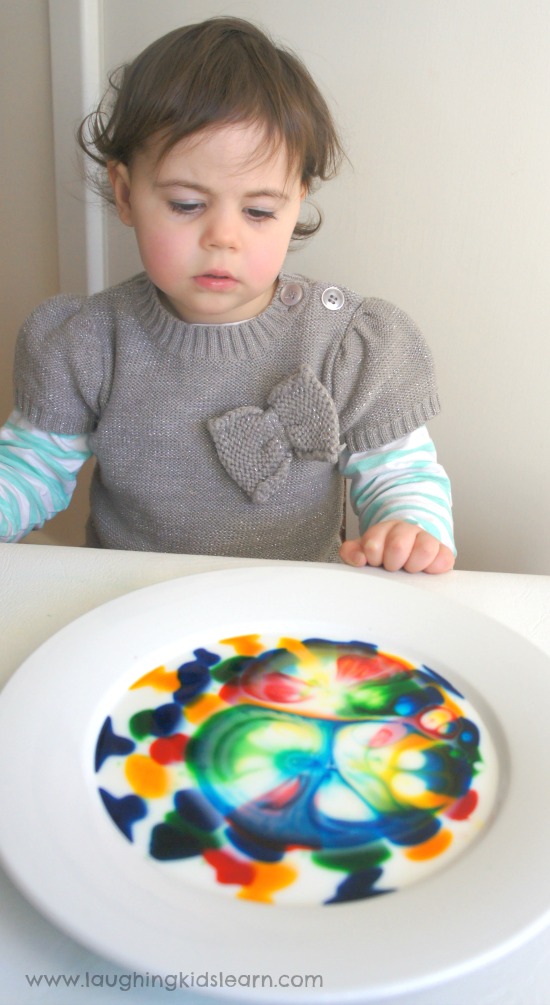
Let the magic happen!!
Carefully add one drop of dishwashing liquid to the middle of the milk.
Quickly a chemical reaction will occur, which will see the colours begin to spread away from the dishwashing liquid drop and begin mixing and churning the colours.
It’s absolutely amazing and you can observe it continually move and swirl for a decent amount of time!
Slowly it mixes together and pushes the colours further away from the dishwashing liquid and having it sink to the base of the plate.
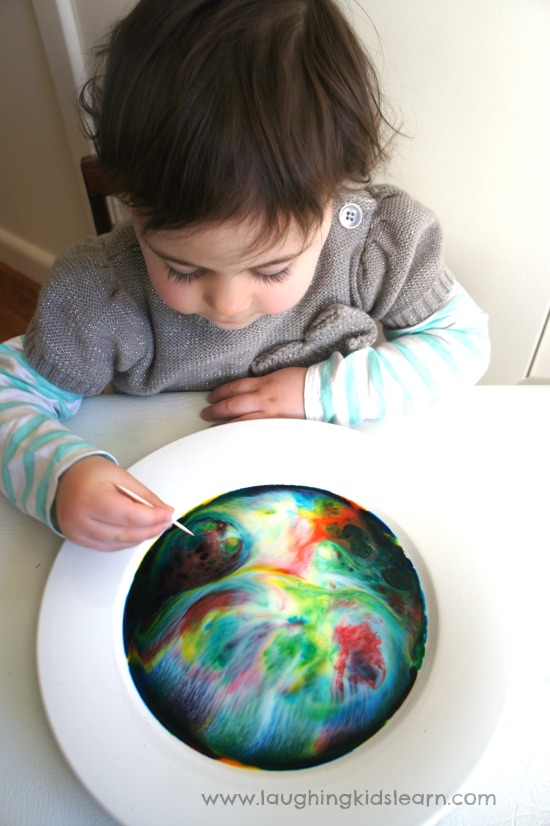
For a bit of fun I decided to give Possum a toothpick. She loved using it to encourage the swirling motion and seeing how they all mixed around each other and created something new to look at.
What is the science behind it, simply put?
Milk is made up of mostly water but it does contain vitamins, minerals, proteins and small droplets of fat. The fat and proteins are super sensitive to changes in the milk and so when the dishwashing liquid is added a chemical reaction occurs.
The soap and fat work hard to join together, which causes the movement. When food colouring is added we are able to witness this chemical reaction occurring. See here for more information.
Going further
You might like to experiment further by adding an extra drop of soap to see if there is more movement. If you see more movement you’ve discovered that there was still more fat that hadn’t combined with the soap. You might like to continue the process.
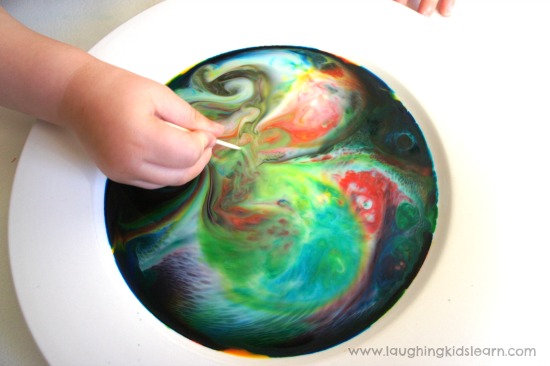 This is certainly a science activity your child will love to do and ask to have you repeat over and over again and again, and you’ll do it because it’s so fun to watch! Check out Coffee Cups and Crayons who have also done this experiment here.
This is certainly a science activity your child will love to do and ask to have you repeat over and over again and again, and you’ll do it because it’s so fun to watch! Check out Coffee Cups and Crayons who have also done this experiment here.
Would your child love observing this science experiment?
Some other ideas you’ll love –
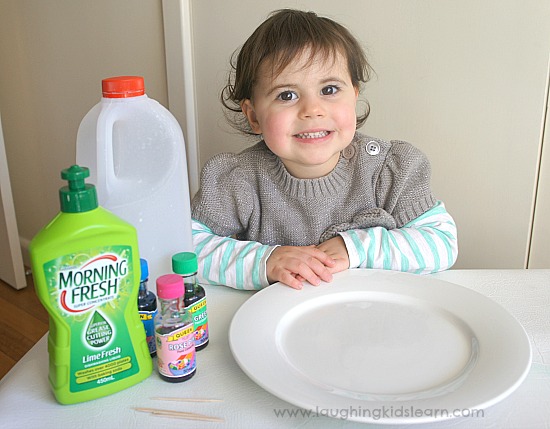
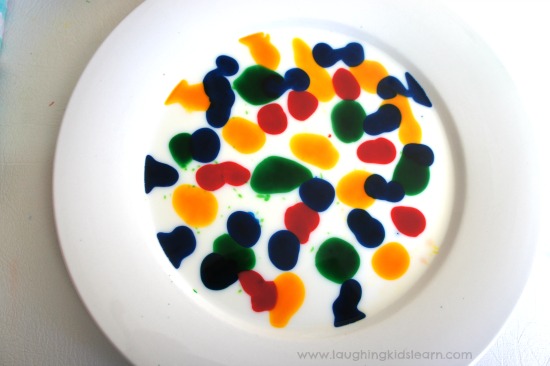
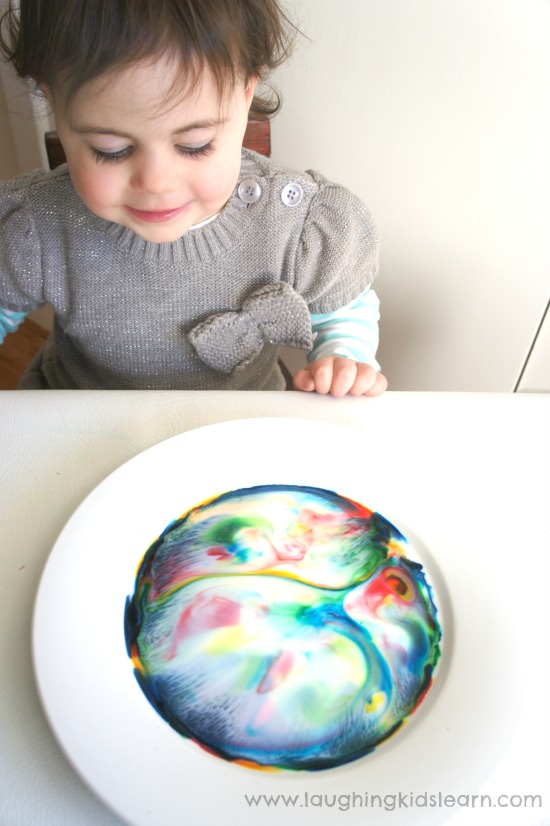

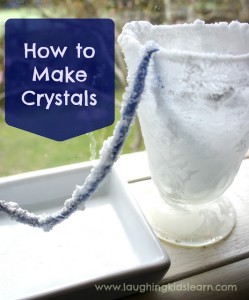

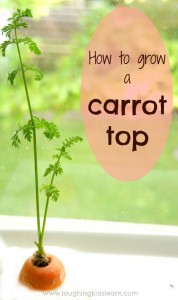

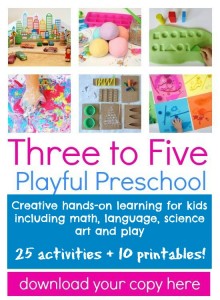
This is so fun and easy. I really admire all of the cool experiments that you do with your little one.
You are right even though I don’t have kids.
Wow, this is so fun and easy. I really admire all of the cool experiments that you do with your little one.
Awww thanks Nicole! We do have lots of fun. Thanks for popping by and taking the time to comment. 🙂
What is the Aim behind this experiment?
Love all the recipes please keep me posted.
Have you subscribed to my blog Gwenda? I’d love to have you on board and that way you won’t miss a post. Click over to my blog http://www.laughingkidslearn.com and add your email address. Warm regards, Kate
Great idea
It doesn’t work with ecostore dishwashing liquid but my 3 year old had a great time swirling the colours
Great blog!
Thanks Heather for sharing that information. Very helpful!
I’m really glad your little 3 year old still enjoyed the activity. We had lots of fun with it and little Possum found mixing the colours quite irresistible too. Hope you’ve had a chance to subscribe to my blog. Thank you kindly for your comments. 🙂
I love this and all of your posts. I have a little man (1 this December) and I have so many things to do with him, thanks to you!
Cheers from Seattle!
What a beautiful message to send me Meg. Thank you so very kindly. I’m thrilled to hear that you’re enjoying the posts I’m sharing and it is keeping your little one year old busy. I can imagine the visual of this science experiment would impress. 🙂
I love your experiments.
I teach a science club at the Boys & Girls Club
And I frequently use your ideas.
Thank you Dixie! I really appreciate hearing that. Feel free to send me through a photo and I can share it on our FB page. 🙂
This experiment is even better if you use half and half. More fat equals more reaction 🙂
So half milk and half detergent?
Half & Half is a high-fat milk product — half milk half cream.
The more fat in the milk the greater the reaction will be thanks E. 🙂
I would like to show this at a school in a slum area in Africa. However, I’m reluctant to “waste” any foodstuffs, in particular if the kids would long for eating/drinking it. Does anybody have an idea how the milk could possibly be replaced by other ingredients? Obviously fat would be required. I assume that the color of the milk also plays a role, so it is probably not easy.
Thank you for your comment. I am no aware of any alternatives and can appreciate your thoughts on this. Is it possible for them to see a video of it being done. I know it isn’t the same as them actually doing it, but I’m sure they will still get the wow factor. Hope that helps.
Thanks for this great idea! I am a homeschool mom and we are doing science experiment week.
We are sooo doing this one this week! It’s very affordable and you already have the items on hand. Perfect!
Hi Helen! So wonderful to receive your message. I’m thrilled you are going to give this experiment a go. We absolutely love it. 🙂
thank you
You are very welcome Luke!
You could probably use oil and water as a substitute for milk.
Also, if you are going to use this to teach kids, it’s probably important to note that this isn’t a chemical reaction. Chemical reactions involve an irreversible change to the molecules themselves and are either exo or endothermic. This is neither. It’s actually physics…the milk’s surface tension is disturbed by the presence of dishwashing liquid (it probably wouldn’t work with dishwasher detergent, so if people are having issues, double check which kind of detergent you are using). Still a very cool demonstration of science. I can’t wait to try it with my niece.
Thank you for your great comments. I will keep them in mind the next time I do a similar type activity.
You named your child Possum?
Yes. 🙂
nice name
you make Grandparenting babysitting a “joy” …thank you for all the easy and quick ideas!
Oh Joy, you make me smile from ear to ear. Thank you so much. Love to hear which activity you have enjoyed the most. 🙂
I’ve tried this with whole milk and 3 different types of dish soap and I can’t get it to work! What am I doing wrong?!
How unusual! The fat in the whole fat cows milk reacts to the dish soap. I can only image that you might be using soap free variety of dish soap or a variation of milk (soy, almond etc won’t work). Let me know how you go Dena.
Thank you! My 8-year-old loved it and my 15-month old liked watching it. Thanks for sharing!!!
You’re so very welcome Maria. Thrilled you were able to entertain both ages. 🙂
I tried this with my 3 and a half year old today & it didn’t work. We ended up with a murky mess. It seemed there was a reaction as soon as I added the food colouring (I hadn’t added the soap at this point). It was fun to do anyway as we tried to figure out why it didn’t look like your photos and we got a “wow” regardless! Thank you
Hi Tracy. I’m so confused why it wouldn’t work for you! It’s the detergent attaching itself to the fat molecules in the milk that causes the reaction so you should see a reaction when you have the milk and food colouring together then add the detergent. Sometimes if you don’t have a full fat milk it can reduce the reaction. I’m glad you still had fun.
Is your child learning about colour? You’ll be amazed at the beautiful creation you make together in this easy and inexpensive activity! Who says art and science don’t mix?
The is goneing to be good i like a lot me will do it at home i like do cool thing
Have fun with it. 🙂
SOOOOOOOO GOOOOOOOOOOOOOOOOOOOD
Thank you! 🙂
I am from New Zealand.
Thank you so much! we had a blast!
Yay! That’s wonderful news.
Hello lovely blog and photos BUT please adjust your explanation. This is NOT strictly a “chemical reaction” as the molecules do not break and form new bonds to form new chemical entities, instead they simply move around due to intermolecular forces between the different molecules – fat, protein and water – where positive, negative, hydrophilic or hydrophobic ends of the different molecules attract or detract one another …here is an excellent explanation 🙂
https://www.acs.org/content/acs/en/education/whatischemistry/adventures-in-chemistry/experiments/colors-move.html
Gah, that’s a difficult explanation for a toddler. Can you somehow simplify for our younger audience? Thank you for helping me teach out community.
There is no chemical reaction going on here. Cute way of explaining hydrophobic, hydrophilic interactions but it is not chemical.